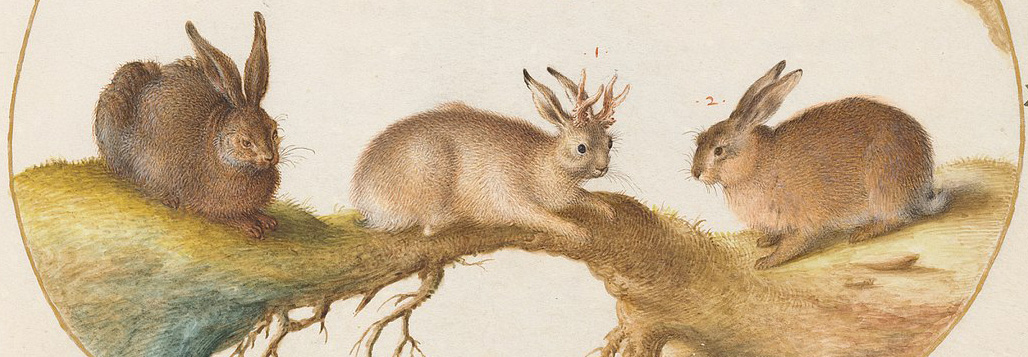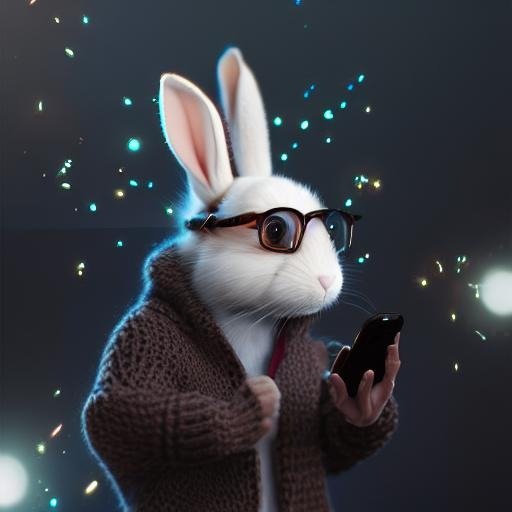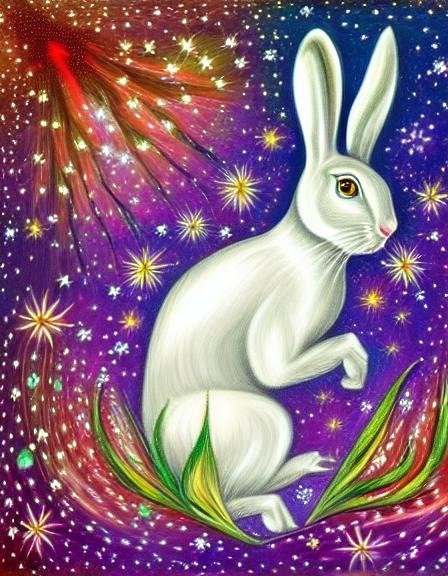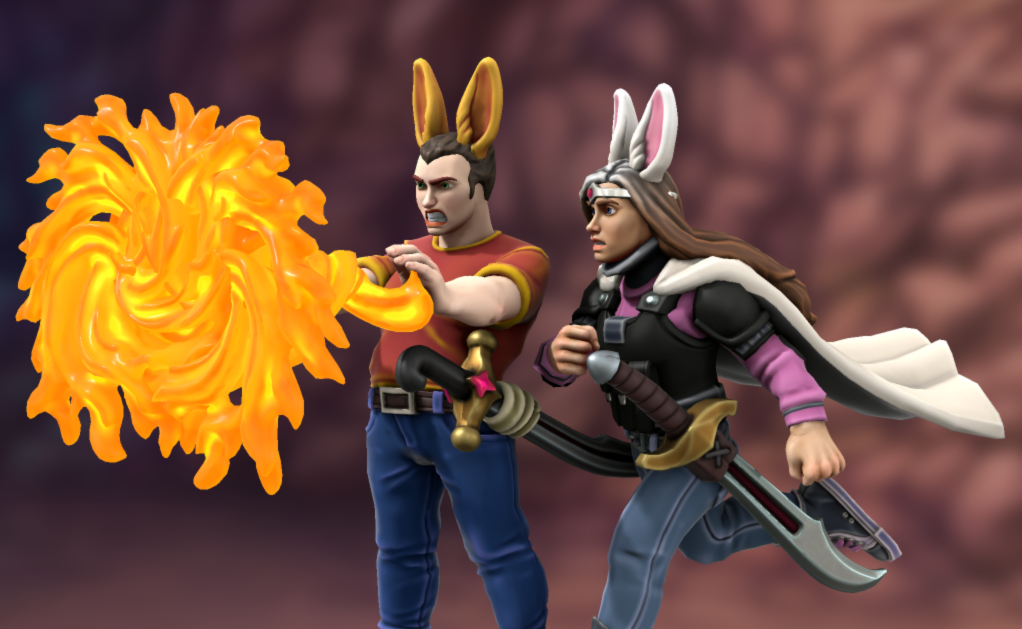Wererabbit
Wererabbits are shapeshifters and Literomancers who develop a totemic relationship with the spirit of Rabbit or Hare in its many guises. They are most common to House Lapin. This catch-all term is used to describe lagomorphic shapeshifters of all types, whether their bunny form is a rabbit, a hare, a pika, or something more exotic, such as a jackalope, skvader or wolpertinger.
Basic Information
Anatomy
In human form, wererabbits are indistinguishable from normal humans, though some possess features that reflect their animal side, such as soft hair, a twitchy nose, buck teeth, or long ears. In bunny form, they are only distinguishable from normal lagomorphs by their superior intellect. In either form, there is no scientific way to distinguish them from normal members of the species, as the therianthropic ability is totemic, not scientific.
Some wererabbits, just like other werebeasts, can partially shapeshift, adapting elements of one form while in another form. For instance, a wererabbit in bunny form might shift a paw to a hand or partial hand in order to manipulate objects, or a wererabbit in human form might shapeshift only their ears, to benefit from a rabbit's superior hearing.
Totemically, all werebeasts can sense one another with their normal senses.
Genetics and Reproduction
Like most werecreatures, wererabbits can choose to reproduce as a human or as the animal type they are. To do the latter requires that their partner also be a werebeast. Human babies are conceived and born in the normal human fashion, although it isn't uncommon for wererabbits to conceive twins or even triplets, both identical and fraternal.
Growth Rate & Stages
If babies are birthed as kits, at about three months old they usually shapeshift into a human toddler. Unless they, too, become totemically-connected literomancers, they maintain that form for the rest of their lives, developing from that point as a normal human child would. It is customary among wererabbits to not give them names until this has occurred, since they, like rabbits, have a high infant mortality rate until the shift.
Because becoming a shapeshifter is accomplished through a magical connection and not a genetic one, a literomancer might potentially develop into a wererabbit at any time, as long as the totemic connection is strong. Sable Aradia is said to have first changed when she was only 10 or 11 years old, and it is said that Prince Jean has always been a wererabbit.
Dietary Needs and Habits
Wererabbits, like humans, are omnivores in their human forms. As rabbits, they are herbivores, however. Most wererabbits choose to maintain a primarily vegetarian diet to avoid digestive issues when they shift forms. They tend to enjoy such things as carrots and bananas, just as their lagomorphic animal cousins do.
Behaviour
Wererabbits often pick up some personality traits from their lagomorphic sides. As a rule, they tend to be clever and quick-witted, with a knack for lateral thinking, but they can also be a bit scattered. Some are extremely peaceful and mild-mannered; others are twitchy and alert. Many are energetic or even hyperactive, and they are often misdiagnosed as having ADHD as children. Jackalopes tend to be somewhat aggressive.
Ironically, some wererabbits have been known for their pragmatism and their strategic thinking. This is not the contradiction it initially appears. As their affinity is with a prey animal, they usually prefer to avoid trouble if they can, and outsmart their enemies if they can't. Still, when cornered, they will claw, bite, and kick with those powerful legs. And in the depths of winter, they will eat their own predators if they can.
If the fight is fair, your tactics suck.
Additional Information
Social Structure
Whether rabbits, hares, or pikas, wererabbits tend to like large families. Werehares prefer a little more privacy than other wererabbits in their personal living quarters, as do werejackalopes.
Geographic Origin and Distribution
Over the course of history, wererabbits have been recorded on nearly every continent, and have been a fixture of many different cultures. This is hardly surprising, considering how ubiquitious and adaptable lagomorphs are, but whether there is any real truth in this is unknown.
For centuries, the Royal House Lapin family line, which tends to produce wererabbits frequently, was centered in modern day Poland and Lithuania, but that ended with the Holocaust. The Lapins are now primarily centered in Western North America, ruling over the Lapin Protectorate.
Perception and Sensory Capabilities
Wererabbits have excellent hearing and vision in their half-rabbit and bunny forms.
Civilization and Culture
Culture and Cultural Heritage
Wererabbits respect lagomorph myths and tend to embrace whatever is local, or common to their human ethnic heritage. As a rule, those legends tend to portray lagomorphs as tricksters or creatures of self-sacrificing compassion, sometimes both. Rabbits in the Moon, a Lapin tradition, may have something to do with this as well.
The wererabbits of House Lapin look to the spirit of Rabbit as Trickster in the form of El-Ahrairah, who was described in the popular novel Watership Down. They view Him as a modern syncretic embodiment of a variety of Rabbit and Hare myths throughout the world, who is mostly clever and compassionate, but can occasionally fail to properly think things through in His impulsiveness.
This article is a work in progress, and may be subject to changes.
This article is part of a series related to streaming the Game of Tomes. For more information, see Streaming Game of Tomes.
Genetic Ancestor(s)
Scientific Name
Homo belua lagomorpha
Lifespan
As human; although some wererabbits have been known to live exceptionally long lives. This is a trait that is sometimes associated with Rabbits in the Moon .
Conservation Status
While werebeasts of any kind are hardly common, wererabbits tend to be among the most numerous of them. Rabbits, after all, are known for their fertility and sociability.
Body Tint, Colouring and Marking
In human form, wererabbits come from almost every human body shape and ethnicity. In bunny form, wererabbits tend to shift into breeds that are common in the areas in which they are raised, showing the same variety of fur coloring and features as the local lagomorphic breed does.
While wererabbits are often depicted as having snow-white fur in art, this is, in fact, uncommon, unless it is common to the particular species of lagomorph they change into, such as the snowshoe hare. The popularity of white wererabbits in art may have its origins in tales of Rabbits in the Moon.
Geographic Distribution
Related Organizations
Related Ethnicities
Related Myths








Comments